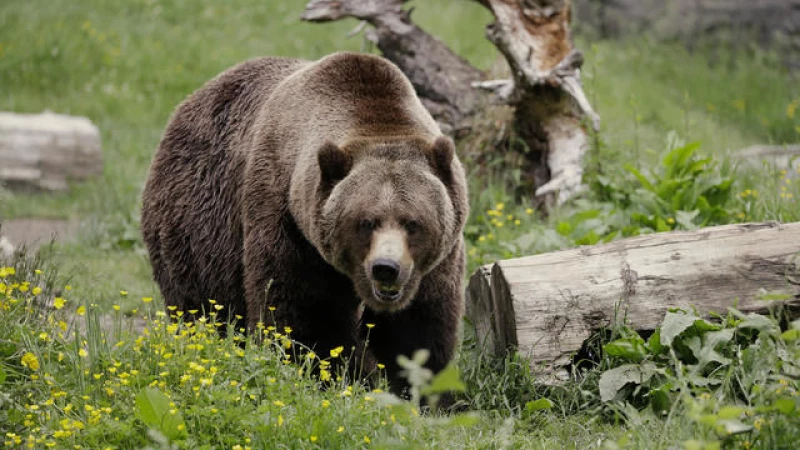The federal government has unveiled a plan to reintroduce grizzly bears to northwest and north-central Washington, where they were nearly eradicated "mainly as a result of human activity," officials revealed on Thursday.
The National Park Service and U.S. Fish and Wildlife Service disclosed this week that they intend to release three to seven bears annually for five to 10 years to establish an initial population of 25. The ultimate goal is to see the population in the area reach 200 bears within 60 to 100 years.
Grizzly bears are classified as threatened in the contiguous United States and currently inhabit four out of six designated recovery zones in portions of Montana, Idaho, Wyoming, and northeast Washington. The bears selected for the reintroduction project will be sourced from regions with robust populations.
No concrete evidence of a grizzly bear within the North Cascades Ecosystem in the U.S. has been confirmed since 1996, as per the National Park Service. The decline in populations is primarily attributed to human-induced causes. While the greater North Cascades Ecosystem extends into Canada, the restoration initiative is focused on the American side.
"The reintroduction of grizzly bears into the North Cascades will once again weave a vital thread into the tapestry of this landscape," expressed Don Striker, superintendent of North Cascades National Park Service Complex.
Due to fragmented habitat caused by rivers, highways, and human activities, the natural repopulation of grizzlies in the region is unlikely.
The park service reports that the grizzly bear population in the North Cascades was significantly reduced by trapping, mining, and bounty hunting during the 1800s, leading to a sharp decline by 1860. The surviving bears faced challenges such as difficulty in finding mates and slow reproduction rates.
The federal agencies intend to classify the bears as a "nonessential experimental population," which would offer more management flexibility in case of conflicts. This designation could lead to certain rules under the Endangered Species Act being relaxed, allowing individuals to harm or kill bears in self-defense or for agencies to relocate bears involved in conflicts. Landowners would also have the option to request the removal of bears by the federal government if they posed a threat to livestock.
The U.S. portion of the North Cascades ecosystem, which is about the size of Vermont, offers ample habitat for dens and a variety of plant and animal species that serve as food sources for bears. A significant portion of this region is under federal management.
In an effort to reintroduce grizzlies to the region, Brad Thompson, state supervisor for the U.S. Fish & Wildlife Service, emphasized that the plan "will be actively managed to address concerns about human safety, property and livestock, and grizzly bear recovery."
The National Park Service recently announced the initiation of a campaign to capture grizzly bears in Yellowstone Park for research purposes. The agency issued a warning to the public to avoid areas with traps, which will be clearly marked.
Tragic incidents in the past have highlighted the importance of managing grizzly populations. Last year, a grizzly bear fatally mauled a woman on a forest trail west of Yellowstone National Park, and three years ago, an attack on a person in Idaho led to the killing of a grizzly bear after it broke into a house near West Yellowstone.






